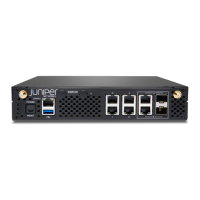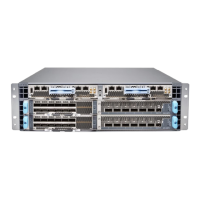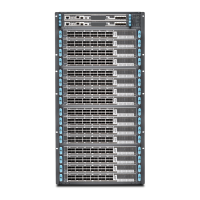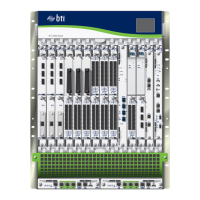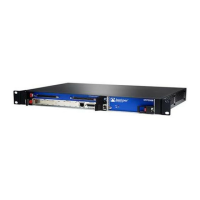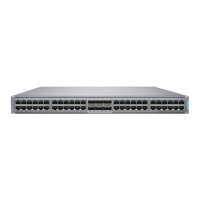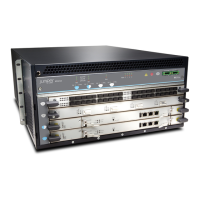What characteristics do these platforms share? All disaggregated Junos OS platforms
are built on three layers. These layers and some possible content are shown in
Figure 7 on page 13.
Figure 7: Physical and Virtual Layers in the Disaggregated Junos OS
The lowest layer is the hardware layer. In addition to memory (RAM) and disk space
(SSD), the platform hardware has a multi-core CPU with an external NIC port used for
management. In some cases, there will be a single NIC port used for the control and data
plane, but that port can also be used to communicate with a Packet Forwarding Engine
for user traffic streams.
The platform software layer sits on top of the hardware layer. All platform-dependent
functions take place here. These functions can include a software switching function for
various virtual components to bridge traffic between them. A Linux or kernel-based virtual
machine (KVM) runs the platform, and, in some models, a phone home agent contacts
a vendor or service provider device to perform autoconfiguration tasks. The phone home
agent is particularly preferred for smaller CPE platforms.
Above the platform software layer is the customer software layer, which perfoms various
platform-independent functions. Some of the components might be Juniper Networks
virtual machines, such as a virtual SRX device (vSRX) or the Junos Control Plane (JCP).
The JCP works with the JDM to make the device resemble a dedicated Juniper Networks
platform, but one with a lot more flexibility. Much of this flexibility comes from the ability
to support one or more VNFs that implement a virtualized network function (VNF). These
VNFs consist of many types of tasks, such as Network Address Translation
(NAT),specialized Domain Name System (DNS) server lookups, and so on.
13Copyright © 2017, Juniper Networks, Inc.
Chapter 1: Architecture Overview
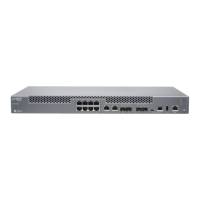
